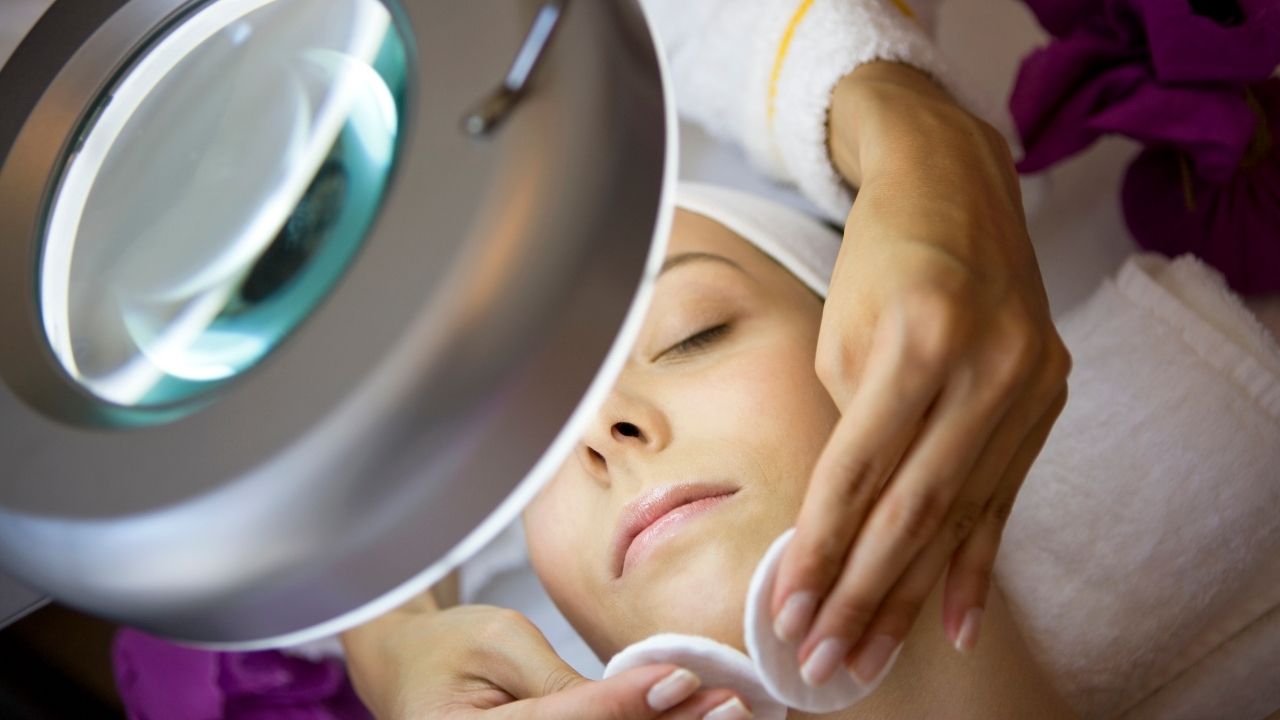Skin pigmentation is an excessive Melanin secretion in certain parts of the skin, mostly with prolonged sun exposure like the face, shoulders, and hands.
You should follow a treatment protocol to achieve skin recovery; facial pigmentation treatments differ according to each condition. Yet, they all essentially require avoiding sun exposure since it would make the issue worse.
The most common skin pigmentation conditions:
- Freckles: they are genetically associated, expressed since birth, especially among people with light skin tone, and they develop due to sun exposure.
- Chloasma: these are mostly associated with hormonal changes, most commonly seen among pregnant women. They are larger spots than those of freckles.
- Acne scars: they leave a mark with a darker color than the natural skin tone.
- Aging pigmentation: they are dark spots that start appearing on the skin with age.
Kinds of Facial Pigmentation Treatments:

Lightening creams:
They are safe OTC creams or gels, used for superficial pigmentation once or twice a day to reduce Melanin levels. However, results take longer than other kinds of treatments. The most common creams of which are the following:
- Hydroquinone.
- Licorice Extract.
- N-Acetylglucosamine.
- Vitamin B3.
Acids:
These products help treat acne scars and pigmentation by exfoliating the superficial layer of the skin, and removing dead cells, giving your skin a youthful and bright appearance.
You mustn’t apply high concentrations of acids by yourself; seek professional help in beauty salons. However, you can use low concentration acids, no more than 10%, at home.
The most common OTC products of which are the following:
- Alpha-Hydroxy acids: glycolic, lactic, citric, malic, or tartaric acid.
- Azelaic acid.
- Kojic acid.
- Salicylic acid.
- Vitamin C.
Vitamin A; Retinoid:
Doctors often prescribe this vitamin for acne and fine lines treatment, but you can also use it for pigmentation when you suffer from other dermal issues as an overall treatment.
It is a suitable choice for all skin tones. Yet, it is better to consult a doctor, especially if you have a dark skin tone.
Chemical Peel:
This treatment is held in cosmetic centers under professional supervision since it uses high acid concentrations as a deep peeling method, reaching the dermis’s middle layer.
Attempting the treatment at home might complicate the issue rather than recovering it since the acid can cause the skin’s redness and irritation.
You can receive chemical peel treatment for chloasma, sunburns, spotting caused by dermal issues, and aging pigmentation. It requires full avoidance of sun exposure for at least a week; do not attempt it if you can’t follow this instruction as you might worsen the issue.
Laser Peeling:
There are two types of laser peels:
- Ablative laser: the specialist applies intense laser rays to the treated area to exfoliate and remove it entirely. It might be a bit painful with some side effects, but it shows better results than the other type, especially if you have a light skin tone.
- Non-Ablative laser: this type induces Collagen production instead of exfoliating a layer of your skin, and it is less effective than the former type.
It is up to your doctor to determine which approach is better for your skin according to its type and color; in some cases, for instance, non-ablative lasers can increase pigmentation instead of brightening them.
Intense-Pulse Light Therapy:
It is safe to say it is a non-ablative laser; intense light is directed towards the treated area to boost Collagen production.
This approach effectively treats superficial skin issues like fine lines, enlarged pores, pigmentation, and spider veins, and it is suitable for people with a light skin tone.
Microdermabrasion:
Your doctor will determine if this approach is suitable for you. The procedure is held in the clinic, using an exfoliation tool to remove the skin’s superficial layer to reach the middle.
This procedure treats hyperpigmentation and scarring and is suitable for people with a light skin tone.
Dermabrasion:
This procedure treats acne, aging pigmentation, sunburn spots, and scarring by removing the skin’s superficial layer and a part of the dermis.
It is also held in a clinic with a specialized tool, and you can see the results in 8 weeks.
Facial Pigmentation Treatments according to skin tone:
- All the treatments mentioned above are suitable for light skin tones.
- Avoid high-beam lasers and intense pulse light therapy if you have a dark skin tone.
- Chemical peels and Microdermabrasion are best for medium skin tones.
- If you have a dark skin tone, you can use Kojic and Glycolic Acids, brightening creams, and low-strength chemical peels. You can also receive Non-Ablative Laser and Microdermabrasion treatments.
- Make sure to use 30SPF or higher sunscreens regardless of your skin tone or issues.
Read more: Collagen hair treatment
Do not forget to visit MetroBrazil Store for high quality Brazilian products.
